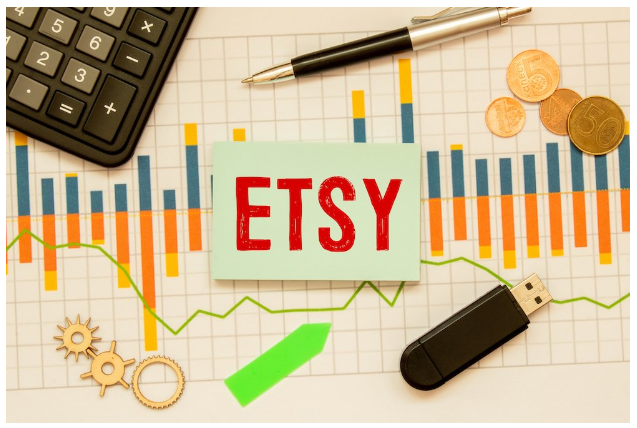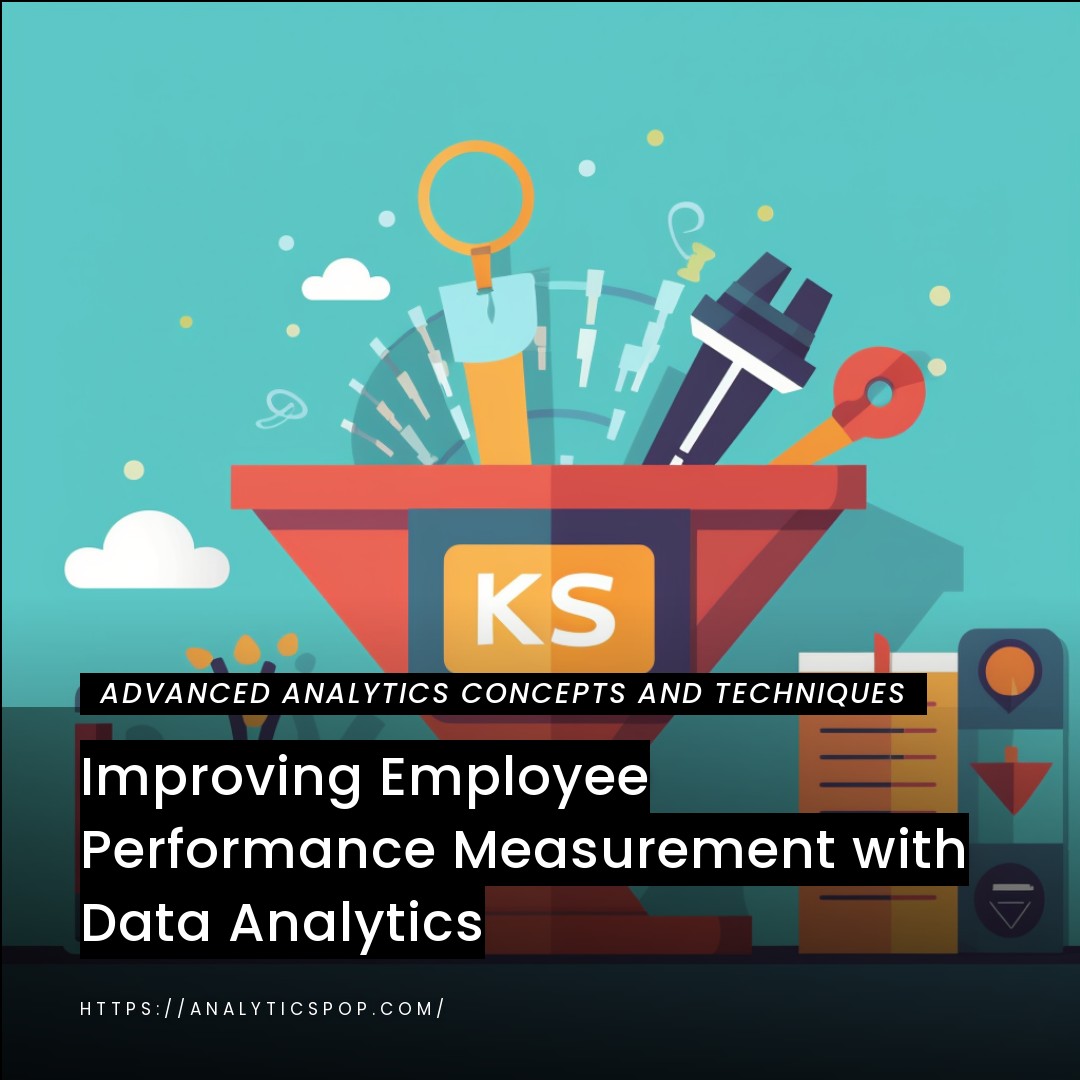Etsy is an online marketplace for independent sellers selling handmade and vintage items. To increase sales and grow your business on Etsy, it’s essential to understand your shop’s performance through Etsy Analytics.
Etsy Analytics provides valuable insights into your shop’s traffic, sales, and customer behavior. You can track the number of visitors, views, and favorites your shop receives, conversion rates, and revenue.
You can identify trends and opportunities to improve your shop’s performance by analyzing your Etsy Analytics data. For example, you can see which products are your best-sellers, which traffic sources drive the most sales, and what search terms customers use to find your shop.
With this information, you can optimize your product listings, improve your marketing strategies, and create targeted promotions to increase sales and grow your business on Etsy. So, if you’re serious about selling on Etsy, use Etsy Analytics to track your shop’s performance and take your selling success to the next level.
What is Etsy Analytics?
Etsy Analytics is a powerful tool that provides data-driven insights into the performance of your Etsy shop. It allows you to track and analyze various metrics related to your shop’s traffic, sales, and customer behavior.
With Etsy Analytics, you can see how many visitors your shop receives, where they come from, and how they engage with your shop. You can also track the number of views, favorites, and purchases your products receive, as well as your revenue and conversion rates.
Etsy Analytics also provides information on your customers, such as their location, device type, and how they found your shop. This data can help you better understand your target audience and optimize your marketing efforts to reach more potential customers.
Etsy Analytics is an essential tool for any Etsy seller who wants to track their shop’s performance and make data-driven decisions to improve their sales and grow their business.
Why use Etsy Analytics for selling success?
Using Etsy Analytics is crucial for achieving selling success on the platform. By analyzing the data provided by Etsy Analytics, you can gain valuable insights into your shop’s performance, which can help you identify areas for improvement and increase your sales.
One of the main benefits of using Etsy Analytics is that it allows you to track your shop’s traffic and sales data, including how many visitors your shop receives, where they come from, and what products they’re interested in. With this information, you can identify trends and opportunities to improve your shop’s performance, such as optimizing your product listings or targeting specific customer segments.
Etsy Analytics also provides data on customer behavior, such as their location, device type, and how they found your shop. This information can help you better understand your target audience and optimize your marketing efforts to reach more potential customers.
Using Etsy Analytics regularly, you can monitor your shop’s progress and make data-driven decisions to improve your sales and grow your business on Etsy. Overall, Etsy Analytics is an essential tool for any Etsy severe seller who wants to achieve selling success on the platform.

Overview of Etsy Analytics capabilities
Etsy Analytics offers a wide range of capabilities to help Etsy sellers gain insights into their shop’s performance and make data-driven decisions to improve their sales. Here are some of the main capabilities of Etsy Analytics:
- Shop Dashboard: This feature provides an overview of your shop’s performance, including views, visits, revenue, and conversion rates.
- Traffic: You can track the number of visitors your shop receives, where they come from, and how they engage with your shop.
- Product performance: You can see how many views, favorites, and sales your products receive, as well as your revenue and conversion rates.
- Search terms: You can see what search terms customers use to find your shop and products, which can help optimize your product listings.
- Customer behavior: You can track customer data, such as their location, device type, and how they found your shop, which can help you better understand your target audience.
- Marketing: You can track the performance of your promotions and ads, including how many clicks and sales they generate.
- Custom reports: You can create reports to track specific metrics or compare data over time.
Etsy Analytics is a powerful tool that provides Etsy sellers with a wealth of data and insights into their shop’s performance. By utilizing these capabilities, Etsy sellers can make data-driven decisions to improve their sales and grow their business on the platform.
Store Performance
If you’re an Etsy seller, you’re likely always looking for ways to improve your store’s performance. You can track a few key metrics to understand how your store is doing and make data-driven decisions to improve your sales.
One important metric to track is your conversion rate, which is the percentage of visitors to your store who make a purchase. You can calculate this by dividing the orders you receive by the number of visitors to your store.
Another essential metric is your average order value (AOV), the average amount spent per order. You can calculate this by dividing your total revenue by the orders received.
To improve your store’s performance, consider optimizing your product listings with relevant keywords and high-quality photos, offering promotions or discounts to encourage purchases, and ensuring your shipping and return policies are clear and customer-friendly. Additionally, actively engaging with your customers and responding promptly to inquiries or reviews can help build a positive reputation and increase customer loyalty.
Product Performance
Product performance is a critical aspect of running a successful e-commerce business. Tracking and analyzing critical metrics related to your product listings is essential to optimize your product performance. Here are some of the primary metrics to consider:
- Views: This metric tracks how often potential customers have viewed your product listing.
- Favorites: This metric tracks how often your product has been added to a customer’s favorites list.
- Conversion rate: This metric measures the percentage of visitors to your product listing who make a purchase.
- Revenue: This metric tracks the total revenue generated by a particular product.
- Reviews: This metric tracks the number and quality of customer review your product has received.
Analyzing these metrics lets you identify trends and opportunities to improve your product performance. For example, you notice that a particular product has many views but a low conversion rate. In that case, you should optimize the product description or pricing to increase its appeal to customers.
Additionally, tracking customer reviews can help you identify areas for improvement in product quality or customer service.
Monitoring and analyzing product performance metrics is crucial for optimizing your product listings, increasing sales, and growing your e-commerce business.

Traffic Sources
Traffic sources are the different channels through which visitors arrive at your website or online store. Understanding your traffic sources is essential for optimizing your marketing strategies and increasing your website or store’s visibility. Here are some of the primary traffic sources to consider:
- Organic search: This refers to visitors who arrive at your website or store through search engine results pages (SERPs) without clicking on a paid ad.
- Direct traffic: This refers to visitors who arrive at your website or store by typing the URL directly into their browser.
- Referral traffic: This refers to visitors who arrive at your website or store through a link on another website or social media platform.
- Paid search: This refers to visitors who arrive at your website or store by clicking on a paid ad on a search engine results page.
- Social media refers to visitors who arrive at your website or store through a link on a social media platform, such as Facebook or Twitter.
By analyzing your traffic sources, you can identify which channels drive the most visitors and sales and adjust your marketing strategies accordingly. For example, you notice that social media is a significant traffic source. In that case, you should focus more on building your social media presence and creating targeted ads or promotions to reach potential customers.
Alternatively, if the organic search is a significant traffic source, you can optimize your website or store’s SEO to improve your search engine rankings.
Understanding your traffic sources is crucial for optimizing your marketing efforts, increasing visibility, and driving more traffic and sales to your website or store.
Targeting and Segmentation
Targeting and segmentation are essential marketing strategies to help businesses reach and engage with their target audience more effectively. Here’s an overview of what they entail:
- Targeting refers to identifying and focusing on a specific group of potential customers most likely to be interested in your products or services. By targeting a particular audience, businesses can create more relevant and effective marketing messages that resonate with their audience and drive more conversions.
- Segmentation involves dividing your audience into smaller groups based on specific criteria, such as demographics, interests, or behavior. By segmenting your audience, you can create more personalized and targeted marketing messages that speak directly to each group’s unique needs and preferences.
Targeting and segmentation can be done using various tools and techniques, such as email marketing campaigns, social media advertising, and website personalization. Some examples of segmentation criteria include age, gender, location, purchase history, and website behavior.
By utilizing targeting and segmentation strategies, businesses can increase the effectiveness of their marketing efforts, reach more potential customers, and drive more conversions.
These strategies are essential for any business looking to engage with its audience more effectively and drive growth in its sales and revenue.
Action Plan
An action plan is a detailed plan that outlines specific steps and strategies for achieving a particular goal or objective. In e-commerce, an action plan might include strategies for improving website or store performance, increasing traffic and sales, or launching a new product or promotion.
Here are some critical steps for creating an effective action plan:
- Define your goal: Start by clearly defining your goal or objective. This could be anything from increasing sales by a certain percentage to improving website traffic or launching a new product.
- Identify your target audience: Determine who your target audience is and what their needs and preferences are. This will help you create more effective marketing messages and strategies.
- Analyze your data: Use tools like Google Analytics or Etsy Analytics to analyze your website or store data and identify areas for improvement. Look at metrics like traffic sources, conversion rates, and product performance to determine where to focus your efforts.
- Develop strategies: Based on your analysis, develop specific strategies for achieving your goal. These include optimizing your product listings, improving your marketing campaigns, or launching a new product or promotion.
- Create a timeline: Outline a specific timeline for implementing each strategy, including milestones and deadlines.
- Monitor your progress: Regularly and adjust your strategies as needed. Use metrics like traffic, conversion rates, and sales to track your progress and make data-driven decisions.
An action plan is essential for achieving your e-commerce goals and driving growth in your business. By following these steps and regularly monitoring your progress, you can stay on track and achieve success in your e-commerce endeavors.
FAQ's
Q: How long does it take to see improvements in sales with Etsy Analytics?
The time it takes to see improvements in sales using Etsy Analytics can vary depending on several factors, such as the current state of your shop, the changes you make based on the data, and external market factors.
Generally speaking, if you make changes based on the insights and data provided by Etsy Analytics, you can expect to see improvements in your sales performance within a few weeks to a few months.
However, it’s important to remember that optimizing your shop for better performance is an ongoing process that requires continuous monitoring, tweaking, and adjusting.
It’s also important to remember that external factors, such as market demand or competition changes, can impact your sales performance. These factors may also affect the time it takes to see improvements in your sales using Etsy Analytics.
The key to improving sales with Etsy Analytics is to regularly monitor your shop’s performance, analyze the data provided by the tool, and make data-driven decisions to optimize your shop for better performance over time.
With patience, persistence, and a commitment to continuous improvement, you can see significant gains in your sales performance with Etsy Analytics.

Q: Can Etsy Analytics be used for competitor analysis?
While Etsy Analytics is primarily designed to help sellers track and analyze their shop’s performance, it can also be used for limited competitor analysis.
For example, you can use Etsy Analytics to analyze your competitors’ product listings and see how they perform regarding views, favorites, and sales. This can help you identify areas where your competitors succeed and adjust your strategies accordingly.
You can also use Etsy Analytics to analyze your competitors’ traffic sources and see where they get the most traffic and sales. This can help you identify potential new traffic sources for your shop and adjust your marketing strategies accordingly.
However, it’s important to note that Etsy Analytics only provides data on public Etsy shops and product listings, so it may not be as comprehensive as other dedicated competitor analysis tools. Additionally, it’s essential to ensure that you are using the data provided by Etsy Analytics ethically and within the platform’s terms of service.
While Etsy Analytics can provide limited insights into competitor performance, it’s primarily designed to help sellers track and optimize their shop’s performance.
Q: How can Etsy Analytics help businesses improve customer experiences?
Etsy Analytics can be a powerful tool for improving customer experiences by providing businesses valuable insights into customer behavior and preferences. Here are some ways that Etsy Analytics can help companies to improve customer experiences:
- Understanding customer behavior: Etsy Analytics provides data on how customers interact with your shop, including how they find it, what products they view, and how long they spend on your site. By analyzing this data, you can better understand your customers’ behavior and preferences, which can help you better tailor your marketing and product strategies to meet their needs.
- Identifying areas for improvement: Etsy Analytics can help you identify areas of your shop that may be causing customer frustration or confusion, such as poor product descriptions or slow load times. Addressing these issues can create a more seamless and enjoyable customer experience.
- Optimizing product listings: Etsy Analytics can help you optimize your product listings by providing data on which products are performing well and which are not. By analyzing this data, you can make data-driven decisions to improve your product descriptions, pricing, and photos to appeal to your customers better.
- Personalizing the shopping experience: By analyzing customer data, you can create more personalized and targeted marketing messages and promotions that resonate with your customers and improve their overall shopping experience.
Overall, Etsy Analytics can provide businesses with valuable insights into customer behavior and preferences, which can be used to create a more seamless and enjoyable shopping experience.
By leveraging these insights and making data-driven decisions, businesses can improve customer satisfaction and loyalty and ultimately drive growth in their sales and revenue.



